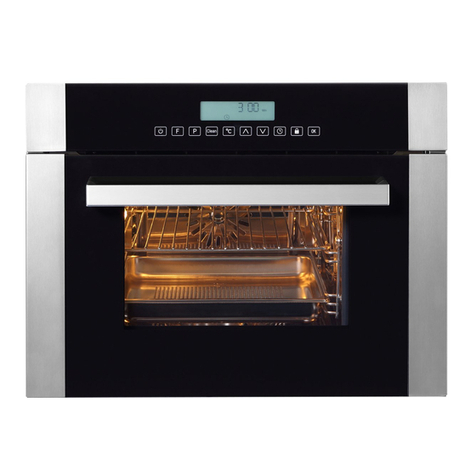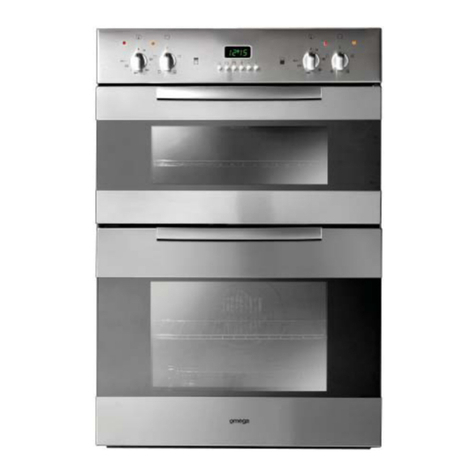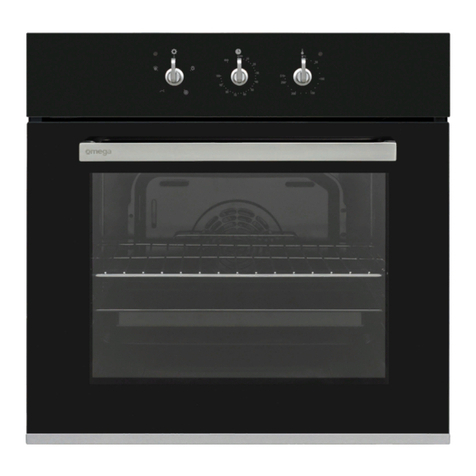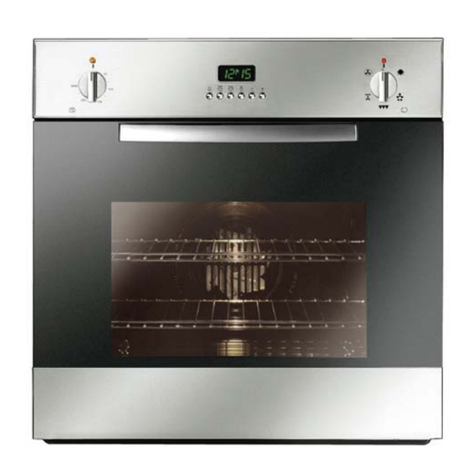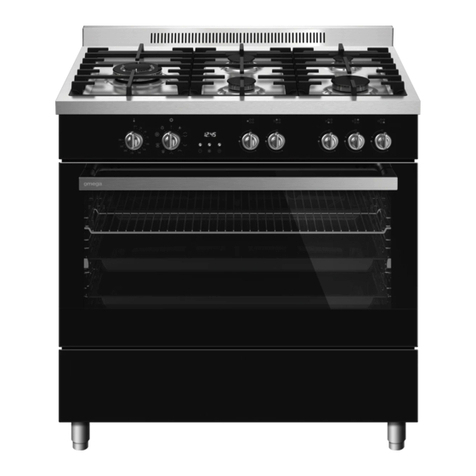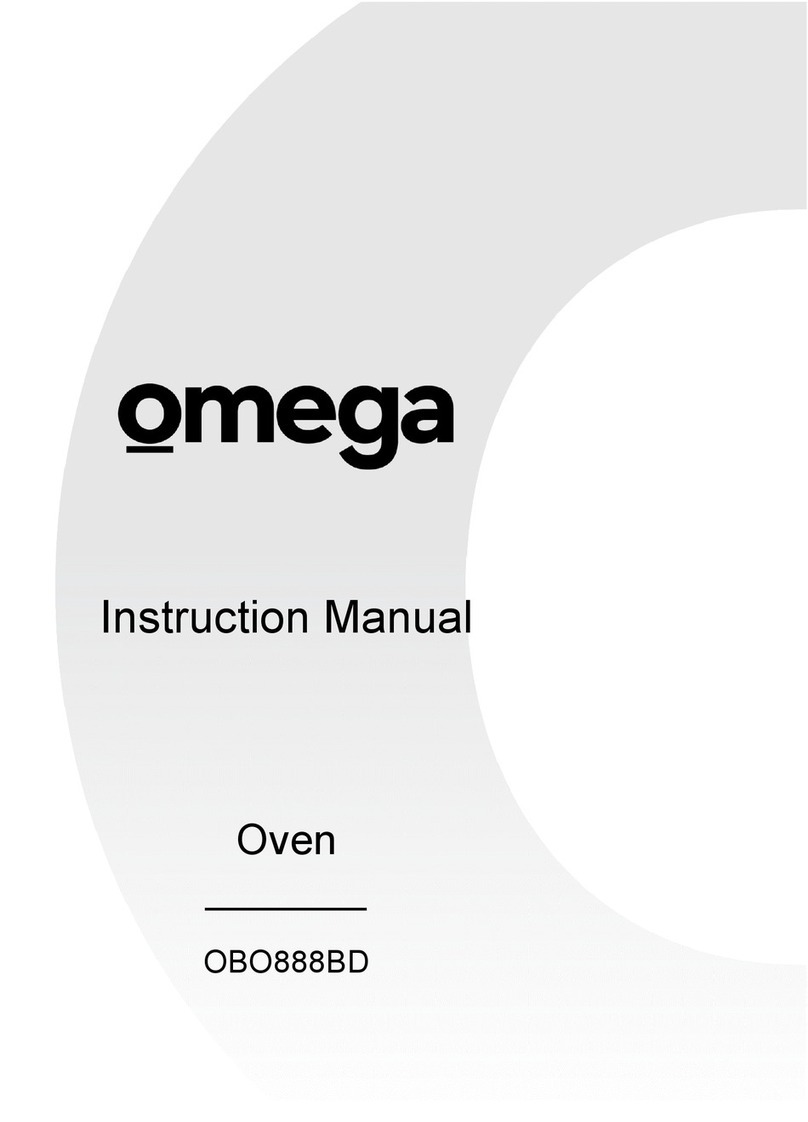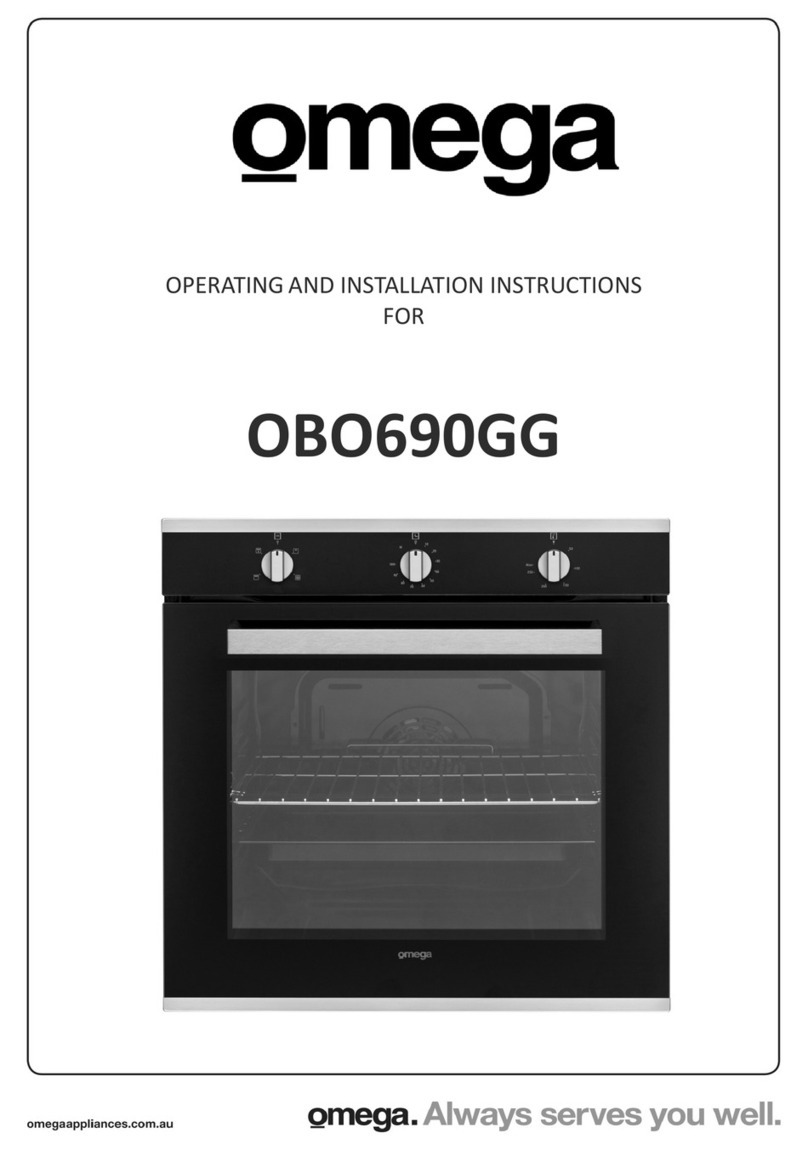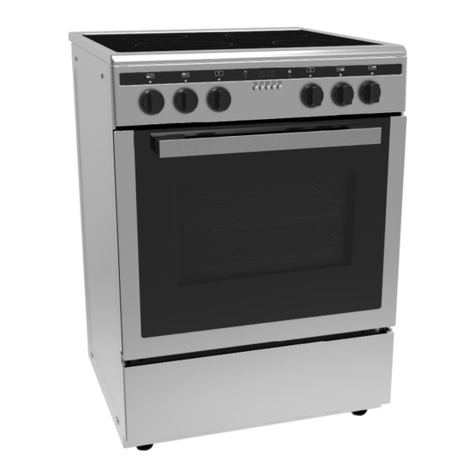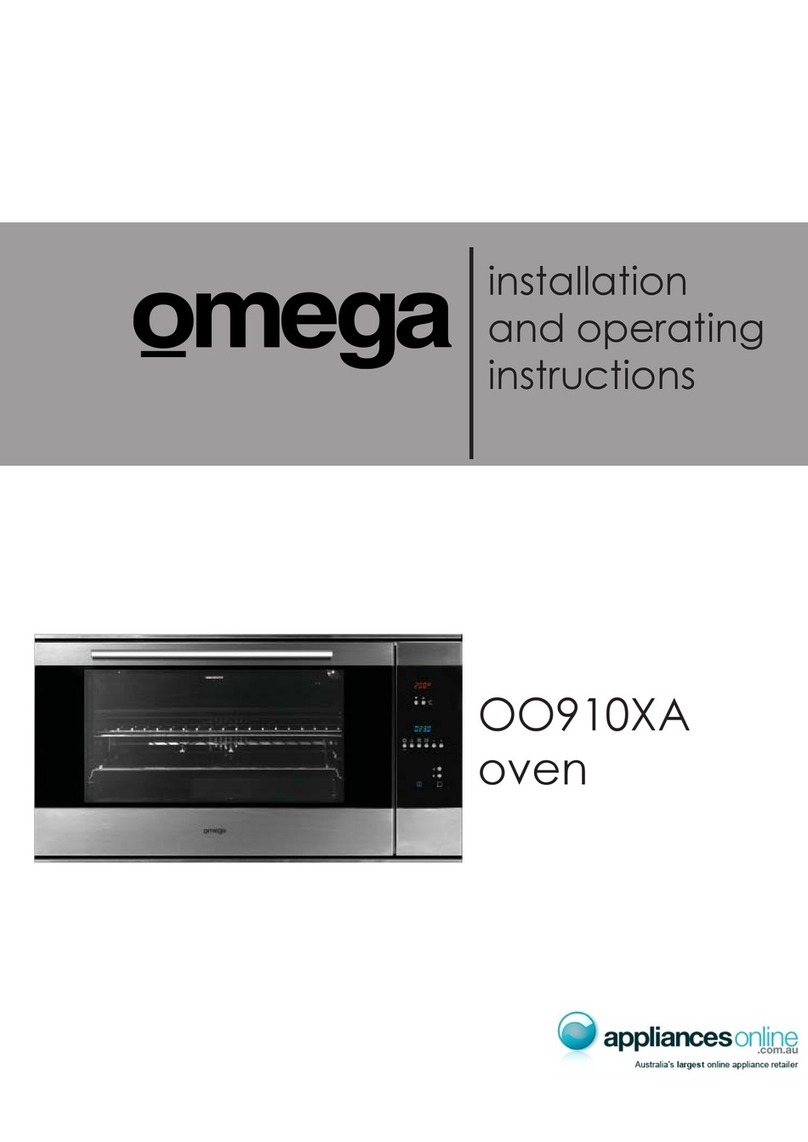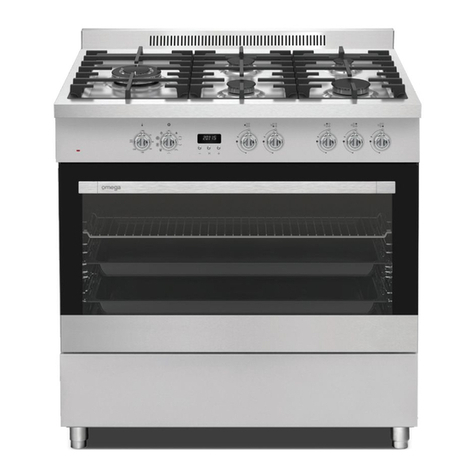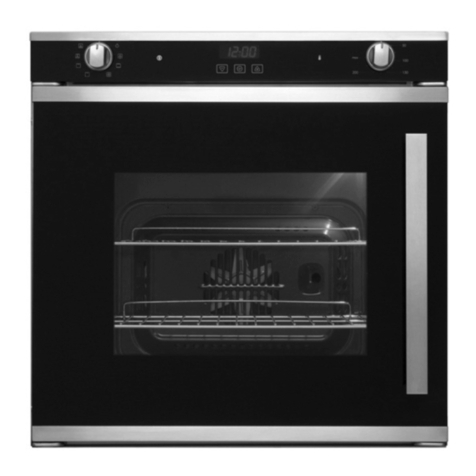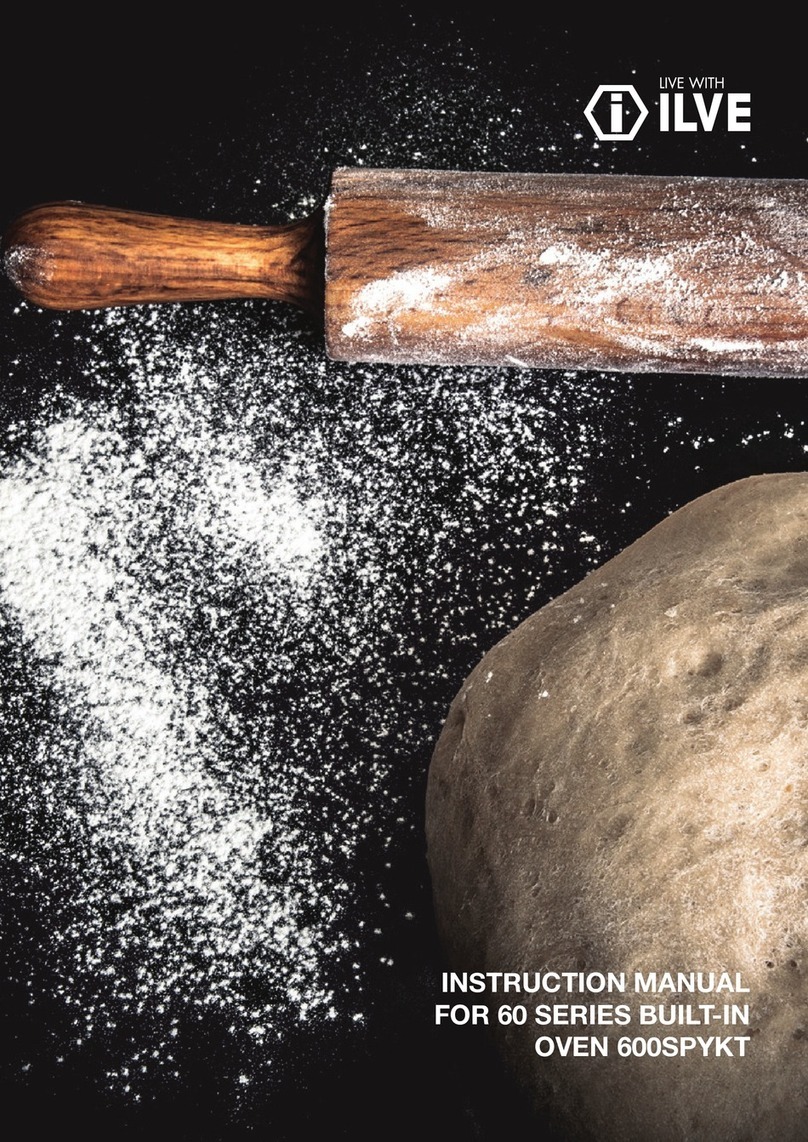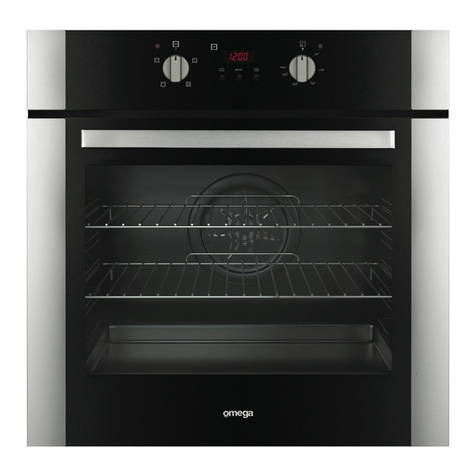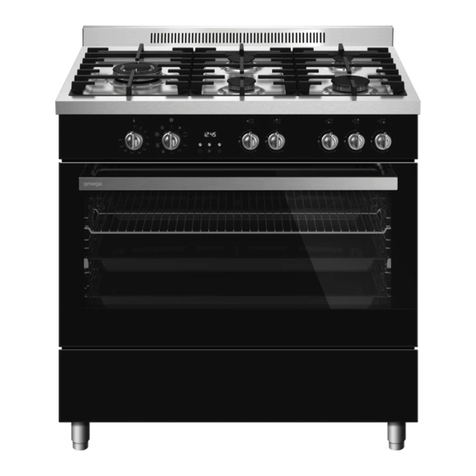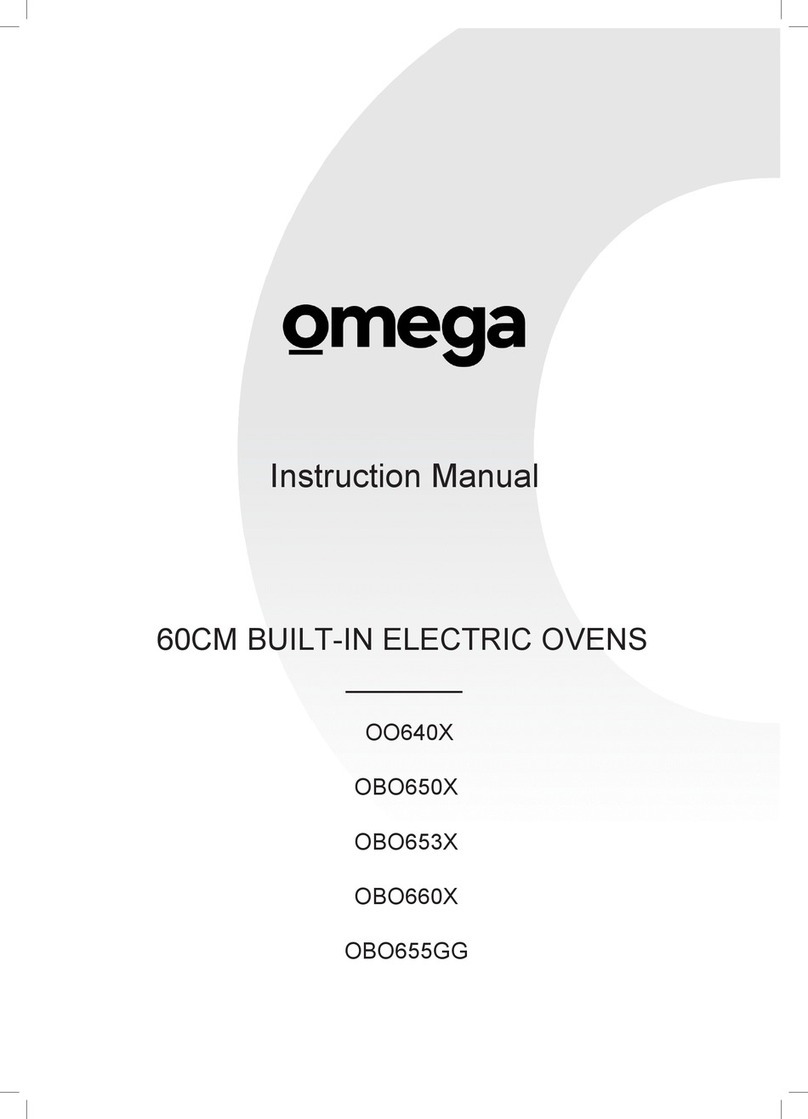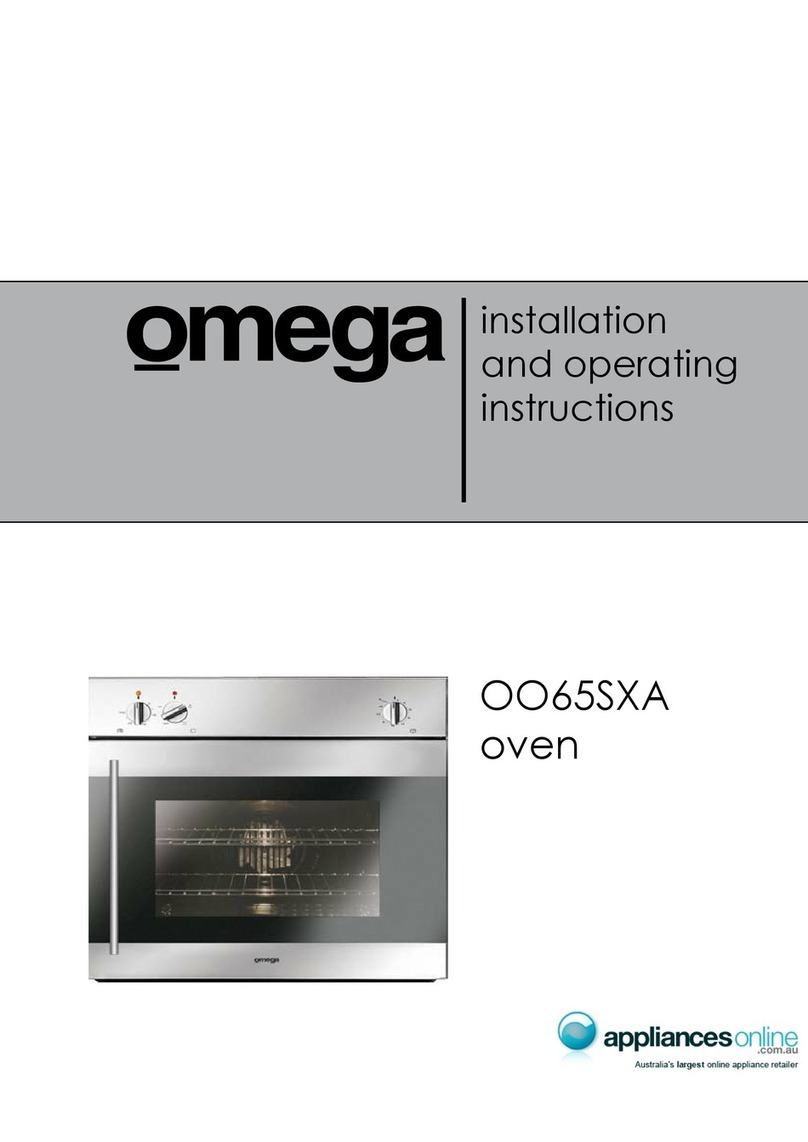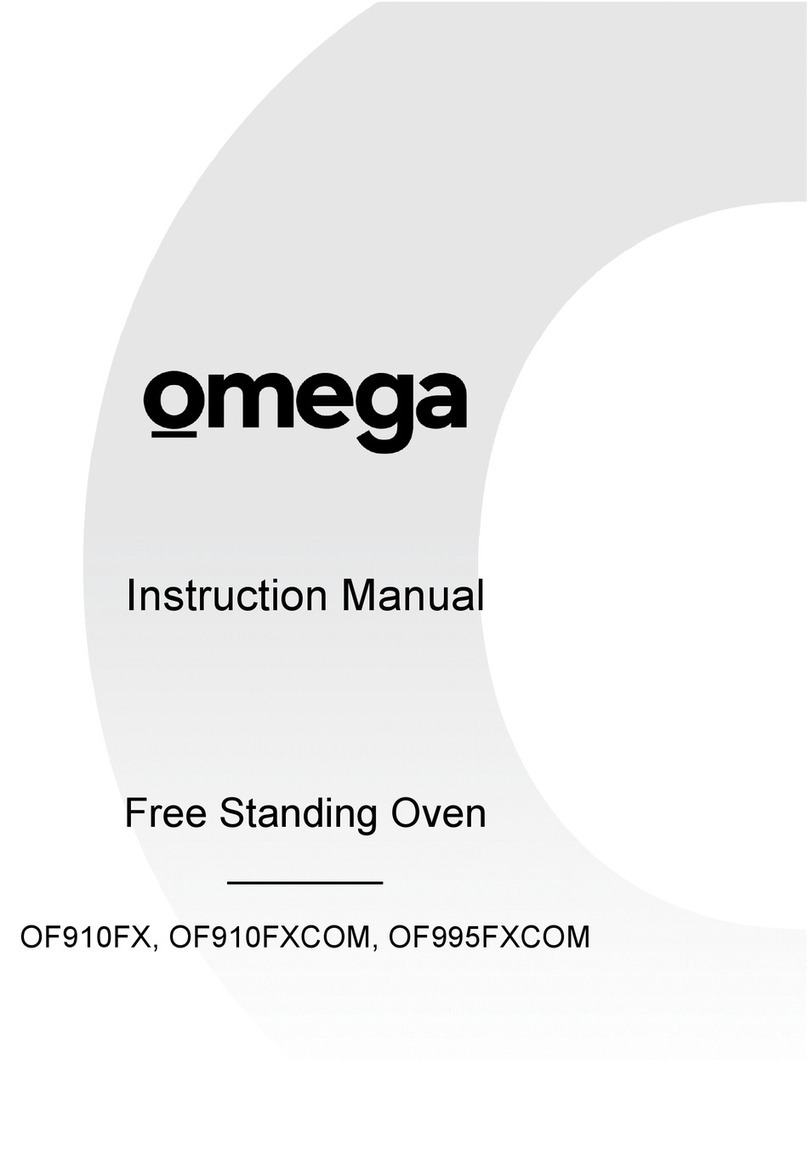
Important Safety Warnings
IMPORTANT: Read the assembly instruction section and safety precautions of this booklet carefully before removing the
contents of this carton.
1. This appliance is not intended for use by persons (including children) with reduced physical, sensory or mental
capabilities, or lack of experience or knowledge, unless they have been given supervision or instruction
concerning the use of the appliance by a person responsible for their safety. Children should be supervised to
ensure that they do not play with the appliance.
2. In certain circumstances electrical appliances may be a danger hazard.
3. Do not place heavy objects in or on these appliances, or use for storage, or let children play or swing from the
door. These appliances are designed for cooking food only.
4. This appliance is designed for domestic household use only and for the cooking of domestic food products. Use
as a commercial appliance will void the warranty. It should not to be used in a marine environment or outdoors.
5. This appliance is supplied with a 10-amp plug.
6. If the electrical supply cord is damaged, either when being installed or after installation, it must be replaced by
the manufacturer, its service centre or similarly qualified persons in order to prevent a hazard.
7. The electrical connection must be accessible after installation. The appliance must be electrically isolated
before any maintenance can be performed, which includes changing a lamp.
8. Electrical connection must be made as per local wiring rules and regulations. Do not disconnect the appliance
with wet hands or bare feet, and do not disconnect the power cord with extreme force.
9. Always grasp the oven door in the centre of the handle as the areas around the door edges may be hot due to
the escape of hot air.
10. Ensure that the kitchen is well ventilated or mechanical ventilation is in use while cooking in this appliance.
11. Do not store or use flammable materials or aerosols near the oven. Items made from aluminium, plastic or
plastic film should also be kept away from the appliance, as they may fuse to the surface.
12. Never line the oven bottom with aluminium foil, as the consequent accumulation of heat could compromise the
cooking and even damage the enamel.
13. WARNING - The oven will become hot during and directly after use. Do not touch any components during this
time, as they may be hot and can cause burns. Do not touch the heating elements inside the oven to avoid
burns. Children should be kept away. Use heat resistant cooking gloves where-ever possible when moving food
and cooking utensils in and out of the oven.
14. Cleaning may only be commenced on the appliance once it has cooled down (best slightly warm). The
appliance should be disconnected from the power outlet or turned off at your isolation switch before
commencing any cleaning process. Do not use a steam jet or any other high-pressure cleaning equipment to
clean the appliance. Follow oven cleaner directions if these are being used.
15. Wash all accessories in hot soapy water or in a dishwasher, wipe dry with a paper or cloth towel. If you use your
oven for an extended period of time, condensation may form. Dry it using a soft dry cloth.
16. When the appliance is not being used, the knobs must be kept in the ‘OFF’ position.
17. Where this appliance is installed in a caravan, it shall NOT be used as a space heater.
18. Do not modify this appliance.
19. Do not use harsh abrasive cleaners or sharp metal scrapers to clean the oven door glass as it can scratch the
surface, which may result in the glass shattering. Clean the glass door using warm damp cloth and dry it with a
soft cloth.
20. All cabinetry and materials used in the installation must be able to withstand a minimum temperature of 50°C
above the ambient temperature of the room it is located in, whilst in use. Certain types of vinyl or laminate
kitchen furniture are particularly prone to heat damage or discolouration at temperatures outside the guidelines
given above. Any damage caused by the appliance being installed without adhering to the temperature limits
set out above will be the liability of the owner.
21. This appliance must be correctly installed by a suitably qualified person, strictly in accordance with the
manufacturer’s instructions. Please see the specific section of this booklet that refers to installation.
22. The appliance must be installed and put in operation by an authorised technician under the conditions provided
by the manufacturer in this manual. The manufacturer cannot be held responsible for any damage that might
occur due to faulty installation.
23. The values indicated on the printed documents found on the product are values obtained in laboratory
environment according to relevant standards. These values may vary according to the usage and environment
conditions of product.
2
Appliance Details
Electrical Details
This information can be found on the rating plate (data label) affixed to the inside of the door jamb.
Electical Connection
LOCAL AUTHORITY REQUIREMENTS
Installation is only permitted by a licensed electrician and carried out according to instructions
provided by the manufacturer. Incorrect installation might cause harm and damage which the
manufacturer accepts no responsibility.
ELECTRICAL INSTALLATION FOR THE LICENSED ELECTRICIAN
This oven must be connected to a 220-240V 50Hz power supply. It is earthed via the cord and 10A plug.
Before carrying out the connection to the power supply, the voltage rating of the appliance (stamped on the
appliance identification plate) must be checked for correspondence to the available mains supply voltage,
and the mains electric wiring should be suitable for the oven’s power rating (also indicated on the appliance
identification plate);
The switched outlet must be connected to a suitable earth wiring, in conformity to current safety regulations.
This appliance must be plugged into a 10A switched outlet. It should not be located above the appliance
and no more than 1.25m away from it. The power supply cord must not touch against any hot surfaces and
must be placed so that its temperature does not exceed 75°C at any point along its length.
After having installed the appliance, the switched outlet must always be in an accessible position.
NOTE: For connections to the mains power supply, never use adapters, reductions or multiple power points
as these may overheat and catch fire.
The mains terminal block is located on the back of the oven and the terminals are accessible by opening
the terminal block cover. Note: The terminal cover should not be opened when the mains power is still
connected to the appliance and never by an unauthorized person.
The electrical safety of this appliance can only be guaranteed if the oven is correctly and efficiently earthed.
The manufacturer declines all responsibility for damage resulting from an installation which has not been
earthed correctly.
The use of adapters, multiple sockets and/or extensions, is not allowed.
If you still have a problem with your appliance after checking these basic troubleshooting steps,
please contact an authorised service person or qualified technician.
Oven does not switch on. Power is switched off.
Check whether there is power supplied.
Also check that other kitchen appliances
No heat or oven does not warm
up.
Oven temperature control is
Oven door has been left open.
Check that the oven temperature control
knob is set correctly.
Oven light (if available) does not
operate.
Lamp has failed.
Electrical supply is disconnected
or switched off.
Replace lamp according to the
instructions.
Make sure the electrical supply is
switched on at wall socket outlet.
Cooking is uneven within the
oven.
Oven shelves are incorrectly
positioned.
Check that the recommended
temperatures and shelf positions are
being used.
Do not frequently open the door unless
you are cooking things that need to be
turned. If you open the door often, the
interior temperature will be lower and this
may affect the results of your cooking.
The timer buttons cannot be
pressed properly.
There is foreign matter caught
between the timer buttons.
Touch model: there is moisture
on the control panel.
The key lock function is set.
Remove the foreign matter and try again.
Remove the moisture and try again.
Check whether the key lock function is
set.
The oven fan (if available) is
noisy. Oven shelves are vibrating.
Check that the oven is level.
Check that the shelves and any bake ware
are not vibrating or in contact with the
The cooling fan continues to
operate after the oven is
Electronically-controlled oven fan
automatically runs for a certain
amount of time to cool the oven.
The fan switches off automatically when
the electronic components have cooled
The oven has switched itself off.
Electronically-controlled ovens
switch off automatically if no
function is in operation.
The oven will switch itself off automatically
to save energy if no other action is taken
within a certain time frame after switching
it on or after the end of a cooking
If the door is opened during a
fan-assisted function, the internal
fan will stop.
Electronically-controlled ovens
with a door switch will stop
cooking if the oven door is
opened.
It is a normal operation of the appliance,
useful when cooking foods in order to
avoid excessive heat escaping. When the
door is closed, the oven will restart to
1
If you still have a problem with your appliance after checking these basic troubleshooting steps,
please contact an authorised service person or qualified technician.
Oven does not switch on. Power is switched off.
Check whether there is power supplied.
Also check that other kitchen appliances
No heat or oven does not warm
up.
Oven temperature control is
Oven door has been left open.
Check that the oven temperature control
knob is set correctly.
Oven light (if available) does not
operate.
Lamp has failed.
Electrical supply is disconnected
or switched off.
Replace lamp according to the
instructions.
Make sure the electrical supply is
switched on at wall socket outlet.
Cooking is uneven within the
oven.
Oven shelves are incorrectly
positioned.
Check that the recommended
temperatures and shelf positions are
being used.
Do not frequently open the door unless
you are cooking things that need to be
turned. If you open the door often, the
interior temperature will be lower and this
may affect the results of your cooking.
The timer buttons cannot be
pressed properly.
There is foreign matter caught
between the timer buttons.
Touch model: there is moisture
on the control panel.
The key lock function is set.
Remove the foreign matter and try again.
Remove the moisture and try again.
Check whether the key lock function is
set.
The oven fan (if available) is
noisy. Oven shelves are vibrating.
Check that the oven is level.
Check that the shelves and any bake ware
are not vibrating or in contact with the
The cooling fan continues to
operate after the oven is
Electronically-controlled oven fan
automatically runs for a certain
amount of time to cool the oven.
The fan switches off automatically when
the electronic components have cooled
The oven has switched itself off.
Electronically-controlled ovens
switch off automatically if no
function is in operation.
The oven will switch itself off automatically
to save energy if no other action is taken
within a certain time frame after switching
it on or after the end of a cooking
If the door is opened during a
fan-assisted function, the internal
fan will stop.
Electronically-controlled ovens
with a door switch will stop
cooking if the oven door is
opened.
It is a normal operation of the appliance,
useful when cooking foods in order to
avoid excessive heat escaping. When the
door is closed, the oven will restart to
If you still have a problem with your appliance after checking these basic troubleshooting steps,
please contact an authorised service person or qualified technician.
Oven does not switch on. Power is switched off.
Check whether there is power supplied.
Also check that other kitchen appliances
No heat or oven does not warm
up.
Oven temperature control is
Oven door has been left open.
Check that the oven temperature control
knob is set correctly.
Oven light (if available) does not
operate.
Lamp has failed.
Electrical supply is disconnected
or switched off.
Replace lamp according to the
instructions.
Make sure the electrical supply is
switched on at wall socket outlet.
Cooking is uneven within the
oven.
Oven shelves are incorrectly
positioned.
Check that the recommended
temperatures and shelf positions are
being used.
Do not frequently open the door unless
you are cooking things that need to be
turned. If you open the door often, the
interior temperature will be lower and this
may affect the results of your cooking.
The timer buttons cannot be
pressed properly.
There is foreign matter caught
between the timer buttons.
Touch model: there is moisture
on the control panel.
The key lock function is set.
Remove the foreign matter and try again.
Remove the moisture and try again.
Check whether the key lock function is
set.
The oven fan (if available) is
noisy. Oven shelves are vibrating.
Check that the oven is level.
Check that the shelves and any bake ware
are not vibrating or in contact with the
The cooling fan continues to
operate after the oven is
Electronically-controlled oven fan
automatically runs for a certain
amount of time to cool the oven.
The fan switches off automatically when
the electronic components have cooled
The oven has switched itself off.
Electronically-controlled ovens
switch off automatically if no
function is in operation.
The oven will switch itself off automatically
to save energy if no other action is taken
within a certain time frame after switching
it on or after the end of a cooking
If the door is opened during a
fan-assisted function, the internal
fan will stop.
Electronically-controlled ovens
with a door switch will stop
cooking if the oven door is
opened.
It is a normal operation of the appliance,
useful when cooking foods in order to
avoid excessive heat escaping. When the
door is closed, the oven will restart to

